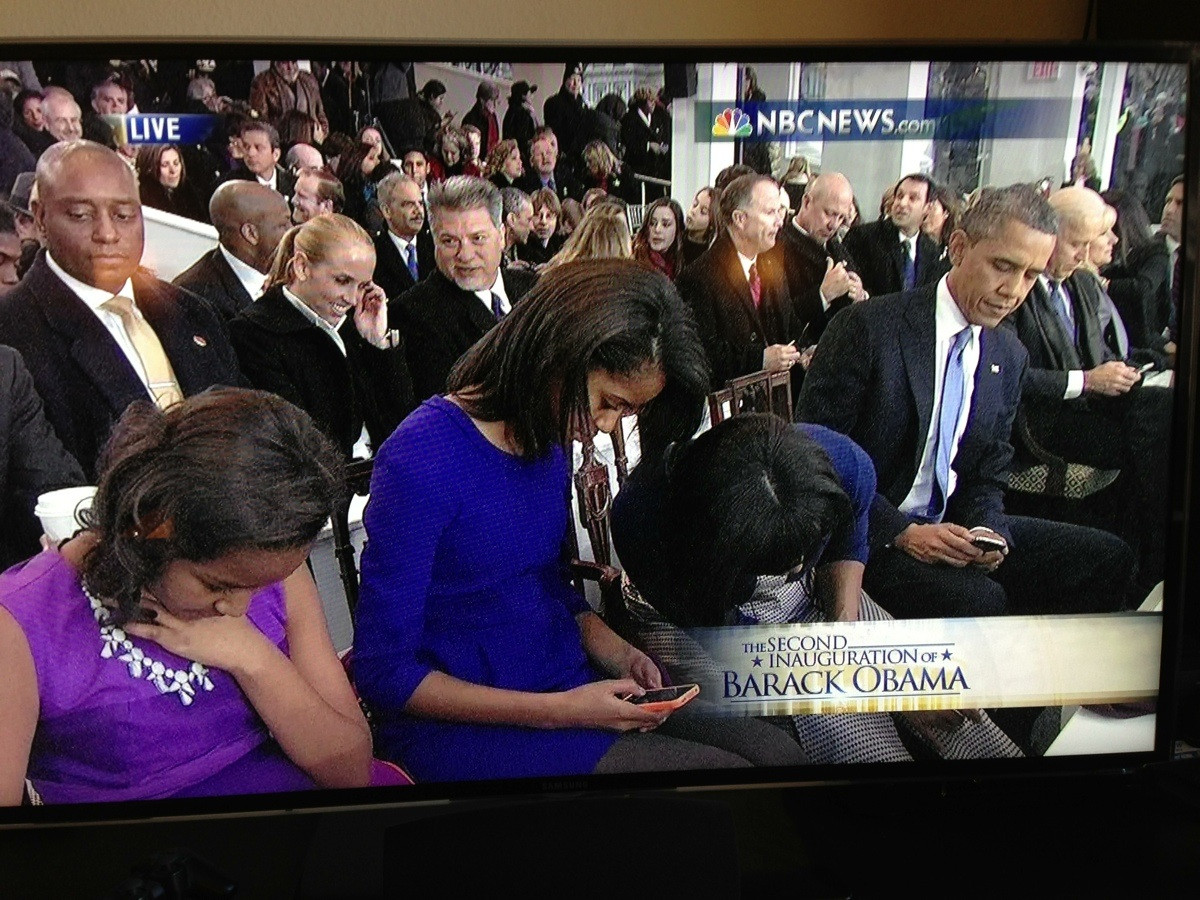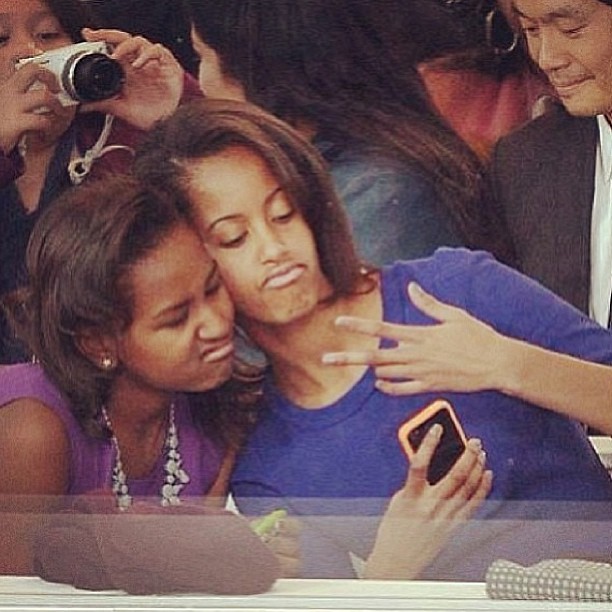My Selfie Project on Instagram
 The Selfie Project is a social media experiment I started on Instagram in order to communicate out of a need to (be) love(d). The project's mission is inspired by the Abbot, a character in Carl Sagan's novel Contact.
The Selfie Project is a social media experiment I started on Instagram in order to communicate out of a need to (be) love(d). The project's mission is inspired by the Abbot, a character in Carl Sagan's novel Contact.
The Abbot asks, "But why do we communicate? [...] Why do we wish to exchange information?" The Abbot concludes, "I believe that we communicate out of love or compassion."
The selfie (a picture taken of yourself with the intent to upload to social media) has become a cultural phenomenon and social practice that reflects a desire to author ourselves while living and being in an era of complicated and intrusive privacy and surveillance practices, all while the body and self image are perpetually scrutinized.
Does narcissism play a role? Perhaps. But that's not my focus here.
Instead, I understand that through the selfie we seek to reach out to others, confront our mortality through digital reflections, and expose pieces of who we believe we are through the mobile self portrait. The selfie becomes a communicative means through which we articulate identity, emotions, and desire. And yes, the selfie, as practice, can be an exercise of self-deprecation.
With the Selfie Project, I attempt to show that there is more to the selfie than the self. Accompanied by poetry, song lyrics and thoughts, there's you.
This is my love story.
Request to follow me on Instagram @Friday025
#TheSelfieProject
Court-involved youth and social meanings of mobile phones
photo by Tara L. Conley
“The mobile is the glue that holds together various nodes in these social networks: it serves as the predominant personal tool for the coordination of everyday life, for updating oneself on social relations, and for the collective sharing of experiences. It is therefore the mediator of meanings and emotions that may be extremely important in the ongoing formation of young people’s identities” (Stald; 2008, pg. 161).
"Dependency Court involved youth rarely have access to a computer or cell phone, and even when they do, it is often only for a short period of time" (Peterson; 2010, pg. 7).
The following is a conversation about cell phones between me and young people involved in foster care and juvenile justice systems. This excerpt is part of ongoing research. Please do not republish.
Tara: I have a question. You all have cell phones, right? And they’re reliable? Do young people [who are court-involved] have cell phones? Do they have data plans? Do they have Smartphones? Do they have flip phones?
Male 1: Some of them have flip phones. Some of them have Smartphones. There are some of them who are scared to pull out their flip phones because...
Female 1: They may get picked on.
Male 1: Exactly!
Tara: They might what?
Female 1: Picked on.
Tara: Picked on? Really?
Male 1: Yes!
Tara: Because they have a flip phone and not a Smartphone?
Male 1: Yes!
Tara: That’s horrible.
Male 1: Kids are vindictive.
Male 2: If you still got a Blackberry you might get picked on.
Female 1: I have a Blackberry. How does that make me less of a person? Because I don’t have an upgraded phone like you?
Male 1: I like it! My Blackberry. I like it more because it’s more of a useful phone than the iPhone and the Galaxy.
Female 1: But you know what? I also think it’s the media that portrays it that way. Like we need it.
Male 1: Of course.
Female 1: It’s like water. Our tap water gets checked everyday to make sure it’s safe for our bodies, but [bottled water] might not get checked as much, but they make it seem like we need it more.
Male 1: But see, if you want to talk about that, that’s on a whole other level. That’s propaganda!
Female 1: But they make it seem like we need this special water.
Male 1: Yeah! They do that with everything! It’s how the government makes money off of the foolish.
Male 2: But then there’s a lot of girls who be like, ‘Oh, if you don’t have an iPhone 5, you’re not popular.’
[Laughing]
Male 1: Yup.
Male 2: The kids get into stuff like that you know. So, I mean there are some kids who don’t have a phone...
Tara: You have an iPhone?
Male 1: Yeah, the 5.
Tara: You have an iPhone?
Female 2: No, the Galaxy Exhibit.
Tara: But they’re all Smartphones?
Male 1, Male 2, Female 1: Yeah.
Male 1: Most of the time, look, it’s hard as hell right now to find a flip phone.
[Laughing]
Male 1: I’m not even going to lie, if you got a flip phone, I’m probably gonna laugh.
[Laughing]
References
Peterson, S. B. (2010). Dependency court and mentoring: The referral stage. Office of Juvenile Justice and Delinquency Prevention.
Stald, G. (2008). Mobile identity: Youth, identity, and mobile communication media. Youth, Identity, and Digital Media. Edited by David Buckingham. The John D. and Catherine T. MacArthur Foundation Series on Digital Media and Learning. pp. 143–164. Cambridge, MA: The MIT Press.
Transcribing data on a Sunday afternoon
Excerpt of transcribed audio from the first TXT CONNECT youth advisory board meeting on March 12, 2013:
What we’re doing is building a communication platform for these young people. It’s not just mobile text messaging. It’s Facebook--and another thing I was thinking with the Facebook page is to do exactly what you guys are saying and suggesting, which is to build this community online where young people can feel like ‘Okay, I know exactly where I need to go to get information.’ The platform that we’re trying to build--the purpose of it is to connect all of these resources together for young people. It’s like a one-stop shop for [court-involved youth] who want to get information about A, B, or C. They know they can go to whatever it is that we’re calling it.
The First Family and Their Cell Phones
 On January 21, 2013, I sat glued to my television and computer screens while watching the pomp and ceremony of Barack Obama's 2nd inauguration. Of all the events, I was most drawn to the inaugural parade. For about an hour, I had the pleasure of catching a unique glimpse of the family's down-to-earthiness. I also got a chance to completely geek out while watching Sasha, Malia, the First Lady, and President Obama use their cell phones.
On January 21, 2013, I sat glued to my television and computer screens while watching the pomp and ceremony of Barack Obama's 2nd inauguration. Of all the events, I was most drawn to the inaugural parade. For about an hour, I had the pleasure of catching a unique glimpse of the family's down-to-earthiness. I also got a chance to completely geek out while watching Sasha, Malia, the First Lady, and President Obama use their cell phones.
Though this written observation is retrospective, I was able to look back at YouTube videos, Instagram and Twitter photos to notate the activities and approximate frequency with which the First Family used their mobile devices. It was fascinating to watch Sasha and Malia play on their phones. The Obama girls held their cell phone for most of the parade (which lasted roughly 1 hour long). The cell phone appeared to be an integral part of the family unit. I am reminded of Sharples, et al., discussion about cell phones in that they function as tools or “interactive agents in the process of coming to know” (pg. 7). It can be argued that this moment was a coming to know experience for the Obama girls as they snapped several pics of their mom and dad kissing, and took endearing photos of each other holding up the peace sign and making funny faces.
Perhaps the most profound takeaway from my observation is recognizing that this humanizing moment between members of the First Family, and as witnessed by the American public, was enabled by a mobile device. While watching the First Family on their cell phones, I couldn’t help but wonder what they were looking at, who they were texting, what apps were they using to edit photos, and also about the security involved in keeping the First Family and the girls’ data ‘safe and private’. I also thought about how fitting it is that Barack Obama is the first wired president in history of the United States. Since 2008, Obama’s campaign has been credited with successfully using social and mobile media for fundraising and organizing. The Obama administration prides itself on connecting with Americans using Twitter, Reddit, and Google Hangout.
While there's much to celebrate about this unique moment in techno-history, I also wonder about the cultural politics of the First Family and mobile technology. So much is to be said for the relationship between technology and its presence in the lives of vulnerable populations, particularly poor people, young girls, and people of color. The visual representation of the First Family using their cell phones illuminates conversations about what, in fact, it means for a prominent Black family with two adolescent girls to engage with mobile technology during an historical and digitally social moment. There’s much to be analyzed.
References
Sharples, M., Taylor, J., Vavoula, G. (2005). Towards a theory of mobile learning. University of Birmingham. UK.



